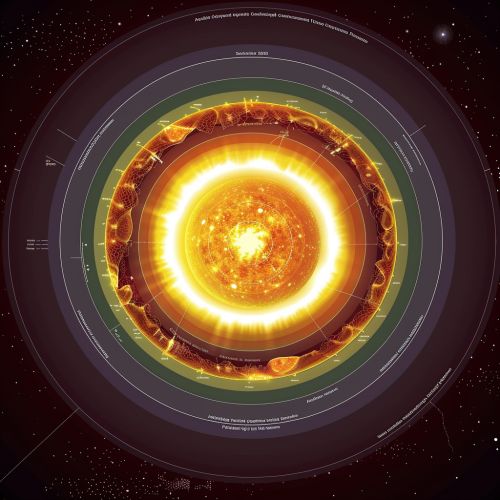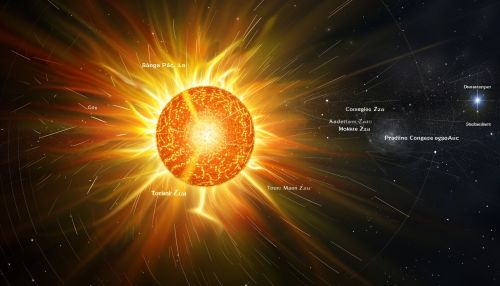Stellar Structure
Introduction
Stellar structure refers to the internal arrangement of matter within a star, which is primarily governed by the principles of hydrostatic equilibrium and thermodynamics. The study of stellar structure involves understanding the various layers of a star, their physical properties, and the energy transfer mechanisms that occur within them.
Fundamental Principles
Hydrostatic Equilibrium
In a star, the force of gravity pulling inward is balanced by the pressure pushing outward, a state known as hydrostatic equilibrium. The pressure is generated by the high temperatures in the star's core, which cause the gas to expand. If the star were to lose this balance, it would either collapse under its own gravity or explode outward.
Thermodynamics
The principles of thermodynamics govern the flow of heat and energy within a star. The first law of thermodynamics, also known as the law of energy conservation, states that energy cannot be created or destroyed, only transferred or converted from one form to another. In the context of a star, this means that the energy produced in the core must be transferred to the surface and radiated into space.
Structure of a Star
A typical star is divided into several layers: the core, the radiative zone, the convective zone, and the photosphere.
Core
The core is the innermost layer of a star, where nuclear fusion occurs. This process involves the combination of lighter elements to form heavier ones, releasing a tremendous amount of energy in the process. The energy produced in the core powers the star and maintains its hydrostatic equilibrium.
Radiative Zone
The radiative zone is the layer of a star where energy produced in the core is transported outward by radiation. Photons, or particles of light, carry this energy through a process known as radiative diffusion.
Convective Zone
In the convective zone, energy is transported by convection, a process where hot gas rises and cool gas sinks. This process creates convective currents that carry energy to the star's surface.
Photosphere
The photosphere is the visible surface of a star. It is where the energy transported from the core finally escapes into space as light.


Stellar Evolution
The structure of a star changes over its lifetime, a process known as stellar evolution. Stars begin their lives as clouds of gas and dust, which collapse under gravity to form protostars. These protostars continue to contract until nuclear fusion begins in their cores, marking their transition into main sequence stars.
As a star exhausts its nuclear fuel, it undergoes various changes in structure and appearance. These changes can include expansion into a red giant, collapse into a white dwarf, or a supernova explosion, depending on the star's initial mass.
